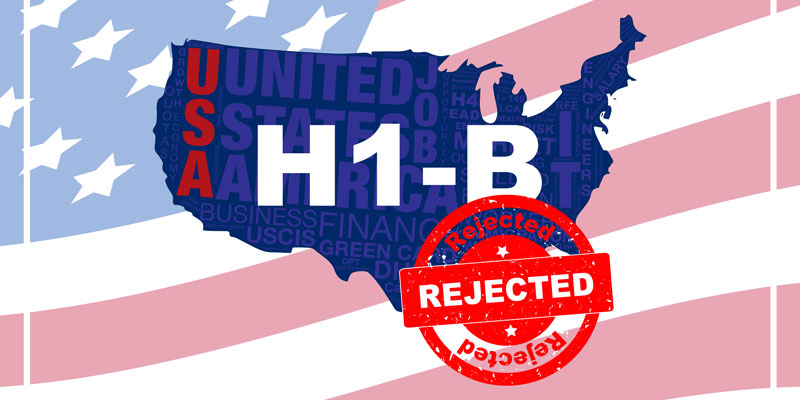
In this article, you will learn about:
According to US law, H1B visa applicants are generally required to attend an interview with a consular officer at a US Embassy or consulate office. Once they have reviewed all the relevant information according to the standards set by US law, the officer decides to either reject or approve the visa.
So, what happens if H1B visa is rejected?
When a US consular officer rejects your non-immigrant H1B visa application, it amounts to a formal denial of your application, based on stipulations in the Immigration and Nationality Act. In most rejection cases, the applicant is notified about which section of the law they failed to meet to prove their eligibility to visit the US. At this stage, consulate officers will also give applicants advice about their chances to apply for a waiver of ineligibility.
Yes. Re-application is definitely a next step you can consider if your visa application has been denied. Suppose your visa was denied due to insufficient documentation. In that case, you have the opportunity to submit the required documents within one year of receiving a denial without having to pay for a new application. Following this, your application will be further processed to conclusion. If you are unable to act within this period, you have to start the process over again and pay a new processing fee. You have unlimited opportunities to apply for a visa.
In many cases, H1B visa refusal (221g) has to do with incomplete documentation proof or additional information required by the consulate.
One of the most common reasons for H1B visa denial remains the inability of the applicant to provide sufficient evidence of strong and long-term family, social, and economic ties outside the US, which makes them depart after a temporary stay.
It is also important to remember that an H1B application involves both an employee and a beneficiary, and rejection can result from errors or ineligibility from either side. The following are some of the top visa rejection reasons involving the employer and beneficiary employee:
Also Read: All You Need to Know About H1B Rejection and Denial
It is important to note the difference between a "rejection" and a "denial" of an H1B visa application. A rejection indicates an error with your filing or fee application. It can be corrected. On the other hand, a denial means that either you or your employer were considered ineligible for an H1B.
After an H1B visa denial, a Re-application usually involves filing a new application with a processing fee. Exceptions to this rule include the ruling of ineligibility based on sections 221(g) and 214(b) of the INA. In this case, the applicant can submit evidence of significant changes in circumstances since the last application.
With most cases of H1B visa rejection, you can follow any of the following steps, depending on where you are applying from:
If you received an H1B visa rejection from the USCIS while you were outside the US, your employer could likely file a second I-129 petition on your behalf, making amends for the shortcomings found in your first application.
This may, however, not always be a viable option. The limitations on the number of H1B visa petitions USCIS can approve over a single year for first-time applicants will mean that re-application after an "H1B visa rejected" response will have to be done before that number is reached. Failure to do so means that a new application will only be possible in the following year.
When your employer applies for an I-129, they are making two requests on your behalf:
Re-application, in this case, must also be done, keeping in mind that the limitations on the number of visas being approved will affect how your re-application will proceed.
If your status cannot be extended and the USCIS denies you a change in status, you will be required to leave the US when your status expires.
H1B visa denial rates have soared over the past few years. Denial rates grew from 6% in FY 2015 to 33% in the second quarter of FY 2019. The viability of reapplying after your H1B has been denied and whether you can apply with the same employer depends on the cause for rejection. If it were simply a case of not getting selected in the H1B lottery, reapplying with the same employer would make sense. If there were shortcomings in your original application, you have to make sure that these have been remedied before you file a fresh application.
Getting the right job and the right employer is the first step to getting your H1B visa approved. Come to TechFetch H1B for legitimate, certified H1B jobs that will give you an edge in the H1B visa application process.
**Disclaimer: H1B rules and regulations keep changing from time to time. For the latest information, always refer to the USCIS official website.**